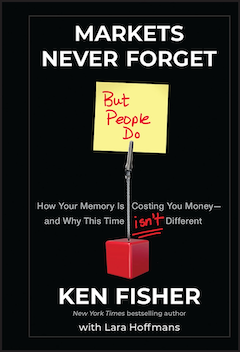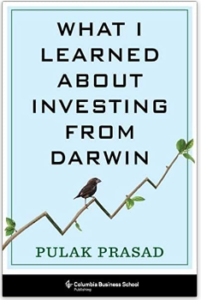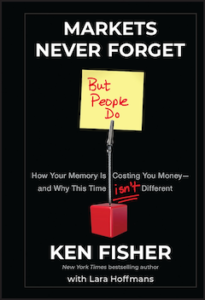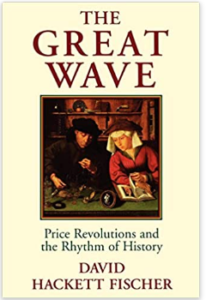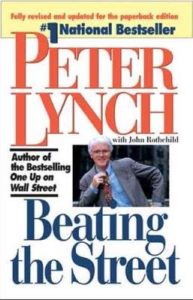by Peter Lynch, 1993 (320p.)
In some respects, Peter Lynch’s second book, Beating the Street (1992), was even better than his first, One Up on Wall Street (1989). Both books were classics, and while it was the first one that made me decide to leave engineering to pursue a career in portfolio management, the second one explains better why Lynch was such an amazing portfolio manager: he focused on companies and was not easily distracted by Mr. Market.
As he writes in the opening sentence of the preface, Lynch retired from the Fidelity Magellan Fund on May 31, 1990, which was exactly 13 years from the day he took the job. “The task of keeping track of so many companies,” he remarks, “had begun to take its toll by mid-decade, as the Dow hit 2000 and I hit 43. In 1989, with the Great Correction of 1987 already behind us and the stock market sailing along smoothly, I was celebrating my 46th birthday with my wife, Carolyn, and my daughters, Mary, Annie, and Beth. In the middle of the party, I had a revelation. I remembered that my father had died when he was 46 years old. You start to feel mortal when you realize you’ve already outlived your parents.” It’s interesting that he was feeling so old at 46.

Truth be told, Lynch didn’t really retire from money management in 1990. He just quit the rat race. In a 2020 interview, at 76 and looking great, he repeats the same message that made him such a legendary dream maker: “In the stock market the most important organ is the stomach, it’s not the brains. There’s always … on the way to work, the amount of bad news you can hear is almost infinite. The question is, can you take that? Do you really have faith that 10 years, 20 years, 30 years from now, common stocks are the place to be? … You ought to look in the mirror every day and say, what am I going to do if the market goes down 10%? What am I gonna do if it goes down 20? Am I going to sell? Am I going to get out? If that’s your answer, you should be reducing it today.”
Later, in Beating the Street, Lynch elaborates on the hectic life he had as a portfolio manager of one of the nation’s most famous funds. His style of investing was unusually eclectic, and it involved quite of bit of trading, mostly because Lynch was the kind of guy who would rarely meet a stock he didn’t like. He was a true enthusiast who claims to have owned more than 15 thousand stocks during his 13 years of running the Magellan Fund. At one point in the book, he cites reading 700 annual reports a year, which sounds impressive, but suggests he couldn’t have gone very deep in understanding what it really was that he was buying. It also implies that his real genius was in just buying and buying in a bull market, but it wouldn’t be fair to call him a bull market genius. Those come and go, but Lynch is still a giant to this day.
Lynch’s portfolio at Fidelity was always changing into what worked best because he had a good nose for a good story, and he sold the ones that were fading to buy the next big movers. I can see how that approach would become exhausting after a while and I am sure he takes a different approach these days.
I still learn a lot from studying Peter Lynch, but it doesn’t change my opinion that it’s not only easier, but much more rewarding, to find the few most outstanding companies and just letting them work for you. While he claims that he would have put 20% or more into Chrysler stock in the 1980s, the reality is that he couldn’t do that in a mutual fund, since the largest position size allowed is 5%. And as most people know today, Chrysler was not exactly a long-term serial compounder, and neither was it an outstanding company.
Lynch frequently speaks of 20-or-30-year horizons, but his way of investing in his earlier years would likely have burned him out had he not quit so soon. He even admits in Chapter 4 that “as I study these reports now, I realize that many stocks that I held for a few months I should have held a lot longer.” That’s the same conclusion Larry Livingston reaches in Reminiscences of a Stock Operator (1923), that Thomas Phelps reached in 100 to 1 in the Stock Market(1972), that Phil Fisher reaches in Common Stocks and Uncommon Profits (1958), and the South African money manager Jannie Mouton reaches in And Then they Fired Me (2011). Keynes also famously reached this conclusion while managing the King’s College endowment during the 1930s. And so did the team at Marathon Asset Management before they decided to pivot away from capital cycles timing calls to focus on quality growth for the long run – as told in their book, Capital Returns (2015).
I do not wish to beat up on Lynch, though, as he is one of my heroes! He made many dreams come true in fund management, but that’s not to say that I would like to repeat his moves as a money manager. According to Fidelity and Lynch’s own claim, the average Magellan investor lost money during Lynch’s tenure, even though it returned and amazing 29% annually from 1977-1990. Lynch’s writings and speeches have likely made many more dreams come true than his famous fund did.
Lynch’s message about the market is so impactful that his videos and books remain prominent and relevant to this day. My favorite part of Beating the Street is when he describes his experience with the Barron’s Roundtable during the time when he was a prominent member. I could not have told it better, so I reproduced most of the chapter below. I used to be an avid reader of the Barron’s Roundtable early in my career, and I recall all the characters that Lynch portrays in his story. The underlying message is as applicable today as it was back then. In fact, I cannot remember a time in the last 25 years of doing what I do, when Lynch’s insight about weekend worrying wasn’t as spot on. Conclusion: When in doubt on a weekend, don’t read Barron’s. Read Peter Lynch!
In closing, this was a fantastic book that I would recommend to anyone even vaguely interested in investing. Lynch is a witty writer who possesses a unique sense of humor and the ability to tell great stories about what matters most. While he does not lack confidence, he is neither arrogant or pedantic, and the message he conveys can help his readers keep calm and not lose perspective when Mr. Market comes swinging for the gut.
Regards,
Adriano
HIGHLIGHTED EXCERPTS:
Chapter Two of Beating the Street: The Weekend Worrier
The key to making money in stocks is not to get scared out of them. A successful investor does not let weekend worrying dictate his or her strategy.
When we make the mistake of letting the news out of the bag, we are confronted with the latest reasons that mankind is doomed: global warming, global cooling, the evil Soviet empire, the collapse of the evil Soviet empire, recession, inflation, illiteracy, the high cost of health care, fundamentalist Muslims, the budget deficit, the brain drain, tribal warfare, organized crime, disorganized crime, sex scandals, money scandals, sex and money scandals. Even the sports pages can make you sick. While catching up on the news is merely depressing to the citizen who has no stocks, it is a dangerous habit for the investor. Who wants to own shares in the Gap if the AIDS virus is going to kill half the consumers, and the hole in the ozone the other half, either before or after the rain forest disappears and turns the Western Hemisphere into the new Gobi Desert, an event that will likely be preceded, if not followed, by the collapse of the remaining savings and loans, the cities, and the suburbs?
You may never admit to yourself, “I decided to sell my Gap shares because I read an article in the Sunday magazine about the effects of global warming,” but that’s the kind of weekend logic that’s in force when the sell orders come pouring in on Mondays. It’s no accident that Mondays historically are the biggest down days in stocks and that Decembers are often losing months, when the annual tax-loss selling is combined with an extended holiday during which millions of people have extra time to consider the fate of the world. Weekend worrying is what our panel of experts, in the first half of the Barron’s session, practices year after year. In 1986, we worried about M-1 versus M-3, the Gramm-Rudman deficit reduction package, what the Group of Seven would do, and whether the “J Curve effect” would begin to reduce the trade deficit. In 1987, we worried that the dollar was collapsing, foreign companies were dumping their products in our markets, the Iran-Iraq War would cause a global oil shortage, foreigners would stop buying our stocks and bonds, the consumer was deeply in shock and unable to buy merchandise, and President Reagan was not allowed to run for a third term.
Mr. Zulauf [a prominent Roundtable participant] set the tone in 1988 with his opening statement that “the honeymoon, from 1982 to 1987, is over.” This was the most optimistic thing said all day. The rest of the time, we debated whether we were going to have a standard bear market, which would take the Dow average down to 1500 or lower, or a killer bear market that would “wipe out most people in the financial community and most investors around the world” (Jimmy Rogers’s fret) and bring about a “worldwide depression like we saw in the early thirties” (Paul Tudor Jones’s). In between worrying about the killer bear market and the worldwide depression, we worried about the trade deficit, unemployment, and the budget deficit. I rarely sleep well the night before I’m scheduled to meet with the Barron’s panel, but after this one I had bad dreams for three months. The 1989 panel was somewhat cheerier than 1988, although Mr. Zulauf brought up the fact that this was the Year of the Snake, a bad sign in Chinese cosmology. When we convened in 1990, the oft-predicted Depression was nowhere in evidence and the Dow had climbed back to 2500 points. Still, we found new reasons to stay out of stocks. There was the collapse in real estate, another calamity to add to the list. We were unsettled by the fact that after seven straight years of up markets (1987 ended with a slight gain over 1986, in spite of the Great Correction), a down market was inevitable. Here was a worry that things had been going too well! Friends of mine, sophisticated people and not easily frightened, were talking about taking the money out of banks and hiding it at home, because they thought the money-center banks might fail and collapse the banking system.
In 1990, they weren’t simply avoiding the subject, they were eager to tell you how they were betting against the market. I actually heard cabdrivers recommending bonds, and barbers bragging about how they’d bought “puts,” which increase in value as stocks decline. Barbers are a segment of the population that I assumed had never heard of put options, but here they were making these complicated wagers with their own paychecks. If Bernard Baruch was right about selling all stocks when the shoeshine boys are buying, then surely the right time to be buying is when the barbers discover puts.
To top it all off, there was a war in the desert to fight. Cameras were rolling in the Pentagon briefing rooms, where millions of viewers learned for the first time where Iraq and Kuwait were located.
In October 1990, The Wall Street Journal noticed that I’d increased my personal stake in W. R. Grace and Morrison-Knudsen, two companies on whose boards I serve. I told the reporter, Georgette Jasen, that these were just “two of about ten stocks I added to… if they go lower, I’ll buy more.” I also went on record as having purchased another 2,000 shares in Magellan to add to my holdings, just as I had after I retired. This was the perfect scenario for the disciplined stock picker to search his or her buy lists for likely prospects. The headlines were negative, the Dow Jones average had lost 600 points over the summer and the early fall, cabdrivers were recommending bonds, mutual-fund managers had 12 percent of their fund assets in cash, and at least five of my fellow panelists were predicting a severe recession. Of course, we now know that the war wasn’t as terrible as some had expected (unless you were an Iraqi) and what we got from the stock market instead of a 33 percent drop was a 30 percent gain in the S&P 500 average, a 25 percent gain in the Dow, and a 60 percent gain in smaller stocks, which added up to making 1991 the best year in two decades. You would have missed it had you paid the slightest attention to our celebrated prognostications. Moreover, if you had paid close attention to the negative tone of most of our “whither the economy” sessions over the past six years, you would have been scared out of your stocks during the strongest leg of the greatest market advance in modern history, when investors who maintained their blissful ignorance of the world coming to an end were merrily tripling or quadrupling their money. Remember this the next time you find you’re being talked out of a good investment by somebody who convinces you that Japan is going bankrupt or that a rogue meteor is hurtling toward the New York Stock Exchange. “Suspense and dread cast a heavy pall over the markets,” said Barron’s the week of our gathering for the 1991 Roundtable and just prior to the great upward spurt in the market that would carry the Dow to a record high.
Keeping the faith and stockpicking are normally not discussed in the same paragraph, but success in the latter depends on the former. You can be the world’s greatest expert on balance sheets or p/e ratios, but without faith, you’ll tend to believe the negative headlines. You can put your assets in a good mutual fund, but without faith you’ll sell when you fear the worst, which undoubtedly will be when the prices are their lowest. What sort of faith am I talking about? Faith that America will survive, that people will continue to get up in the morning and put their pants on one leg at a time, and that the corporations that make the pants will turn a profit for the shareholders. Faith that as old enterprises lose momentum and disappear, exciting new ones such as Wal-Mart, Federal Express, and Apple Computer will emerge to take their place. Faith that America is a nation of hardworking and inventive people, and that even yuppies have gotten a bad rap for being lazy. Whenever I am confronted with doubts and despair about the current Big Picture, I try to concentrate on the Even Bigger Picture.
The Even Bigger Picture is the one that’s worth knowing about, if you expect to be able to keep the faith in stocks. The Even Bigger Picture tells us that over the last 70 years, stocks have provided their owners with gains of 11 percent a year, on average, whereas Treasury bills, bonds, and CDs have returned less than half that amount. In spite of all the great and minor calamities that have occurred in this century—all the thousands of reasons that the world might be coming to an end—owning stocks has continued to be twice as rewarding as owning bonds. Acting on this bit of information will be far more lucrative in the long run than acting on the opinion of 200 commentators and advisory services that are predicting the coming depression. Moreover, in this same 70 years in which stocks have outperformed the other popular alternatives, there have been 40 scary declines of 10 percent or more in the market. Of these 40 scary declines, 13 have been for 33 percent, which puts them into the category of terrifying declines, including the Mother of All Terrifying Declines, the 1929–33 sell-off.
I’m convinced that it’s the cultural memory of the 1929 Crash more than any other single factor that continues to keep millions of investors away from stocks and attracts them to bonds and to money-market accounts. Sixty years later, the Crash is still scaring people out of stocks, including people in my generation who weren’t even born in 1929. If this is a post-Crash trauma syndrome we suffer from, it’s been very costly. All the people who’ve kept their money in bonds, money-market accounts, savings accounts or CDs to avoid being involved in another Crash have missed out on 60 years of stock-market gains and have suffered the ravages of inflation, which over time has done more damage to their wealth than another crash would have done, had they experienced one. Because the famous Crash was followed by the Depression, we’ve learned to associate stock-market collapses with economic collapses, and we continue to believe that the former will lead to the latter. This misguided conviction persists in the public mind, even though we had an underpublicized crash in 1972 that was almost as severe as the one in 1929 (stocks in wonderful companies such as Taco Bell declined from $15 to $1) and it didn’t lead to an economic collapse, nor did the Great Correction of 1987. Perhaps there will be another Big One, but since I’m not equipped to predict such matters—nor, obviously, are my learned colleagues on the Barron’s panel—what’s the sense of trying to protect myself in advance?In 39 out of the 40 stock-market corrections in modern history, I would have sold all my stocks and been sorry. Even from the Big One, stocks eventually came back.
A decline in stocks is not a surprising event, it’s a recurring event—as normal as frigid air in Minnesota. If you live in a cold climate, you expect freezing temperatures, so when your outdoor thermometer drops below zero, you don’t think of this as the beginning of the next Ice Age. You put on your parka, throw salt on the walk, and remind yourself that by summertime it will be warm outside. A successful stock picker has the same relationship with a drop in the market as a Minnesotan has with freezing weather. You know it’s coming, and you’re ready to ride it out, and when your favorite stocks go down with the rest, you jump at the chance to buy more. After the Great Correction, when 508 points were shaved from the Dow Jones average in a single day, a symphony of experts predicted the worst, but as it turned out, the 1000-point decline in the Dow (33 percent from the August high) did not bring on the apocalypse that so many were expecting. It was a normal, albeit severe, correction, the latest in a string of 13 such 33 percent drops in this century. The next 10 percent decline, which may already have occurred since I’ve written this, will be the 41st in recent history, or, if it happens to be a 33 percent decline, the 14th. In Magellan’s annual reports, I often reminded the shareholders that such setbacks were inevitable. The story of the 40 declines continues to comfort me during gloomy periods when you and I have another chance in a long string of chances to buy great companies at bargain prices.



